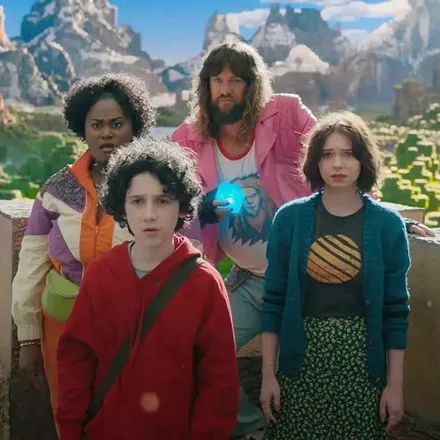Mortal Thoughts
Documentary filmmaker Kirsten Johnson and her father face life-and-death questions in Dick Johnson Is Dead.
By Scott Renshaw @scottrenshawYou're going to die. I'm going to die. Inevitable mortality is the last word and punch line of human existence, the elephant in the room with which we avoid making eye contact. And on some level, maybe it's the subject of every piece of art ever created—a permanent record of how the temporary shell of its creator once viewed the world.
Kirsten Johnson's Dick Johnson Is Dead takes mortality as its subject more honestly and obviously than most other artistic works, but does so with a breadth of humanity that is at times hilarious, at times tear-jerking, always singular in its vision. The unique beauty of Johnson's film is that she deals with the notion of death not through her own fears of not existing, nor specifically through grief, but through the recognition that someone she loves will not be around for much longer—and the idea that, as an artist, there might be something she can do about it.
For Johnson, that person is her father, Dick, whom she also describes in narration as "my best friend." An octogenarian psychiatrist living in Seattle, Dick has begun to show signs of memory loss—a particularly scary prospect for both Dick and Kirsten, since they had already watched Kirsten's mother's decline and death from Alzheimer's several years earlier. So as they begin the process of moving Dick from Seattle to live with Kirsten in New York—closing down both his medical practice and their family home—Kirsten decides to chronicle her father the way she wants to remember him, but also in a way that, theoretically, will prepare them both for the inevitability of his passing.
And that way, as it turns out, is staging Dick's death from a variety of creative accidents—falling down a flight of stairs, getting hit by a board carried by a construction worker, etc. Kirsten Johnson gets some comedic mileage out of the preparations for these faux deaths, from hiring a stunt man to take the falls in Dick's place, to introducing Dick to the fake blood pump he'll wear for one scene. Dick Johnson Is Dead punctuates these sequences with elaborately staged comic visions of the afterlife, as Dick experiences the joys of heaven in a reunion with his wife, an eternal chocolate fountain, the perfection of the congenital abnormality in his toes, or maybe having dinner with Bruce Lee and Sigmund Freud.
But as endearingly goofy as these bits are, Dick Johnson Is Dead hits home most powerfully in its portrayal of the complex emotions involved when an adult child becomes caregiver to their aging parent. There's a catch-in-the-throat moment early on when Kirsten makes it clear to Dick that they're selling his car—partly because it will be unnecessary in New York, and partly because it might no longer be safe for him to drive. We see the realization on Dick's face that this moment marks a transition from independence to dependence, and the way in which he responds to Kirsten with a simple "okay" feels both like a heart-swelling expression of trust in her, and a heart-breaking recognition that he's no longer the person he once was.
All of these moments work because Dick Johnson Is Dead is built on the obvious love between father and daughter, and the way Kirsten establishes them both as characters. That goal is fundamental to this project, as Kirsten explains when she describes how the only footage she has of her mother is from a time after her mother's personality had mostly already been obliterated by her disease (a journey partially conveyed in Kirsten Johnson's fantastic previous film, Cameraperson). This film is meant as a monument to the man Kirsten wants to remember, and the realization that this kind, clever person will eventually fade away makes it all the more potent.
What also emerges from Dick Johnson Is Dead, however, are the limitations of Kirsten's experiment. Filming simulations of her father's death can't possibly prepare her for the emotions of the real thing, and that tension permeates scenes in which it's not always clear what is "real" and what is cinematic artifice. The result is a documentary that somehow becomes a testament both to art's potential for immortalization, and for its limitations—and how, at their best, creative works can open you to the wonderful, terrible complexities of facing life and death.
More by Scott Renshaw
-
Comedian Steve Hofstetter interview
Veteran standup talks about getting started, dealing with hecklers, and learning a valuable lesson in SLC
- Apr 11, 2025
-
Film Reviews: New Releases for April 11
The Amateur, Drop, The Ballad of Wallis Island, Warfare, King of Kings, Sacramento
- Apr 10, 2025
-
Movie reviews: THE BALLAD OF WALLIS ISLAND, WARFARE, THE KING OF KINGS
Wars of words, weapons and ideas drive three new theatrical releases
- Apr 9, 2025
- More »
Latest in Film Reviews
Readers also liked…
-
Sundance 2025 wrap-up plus February special screenings
Uncertainty about the future location shifts focus away from the movies
- Feb 5, 2025









